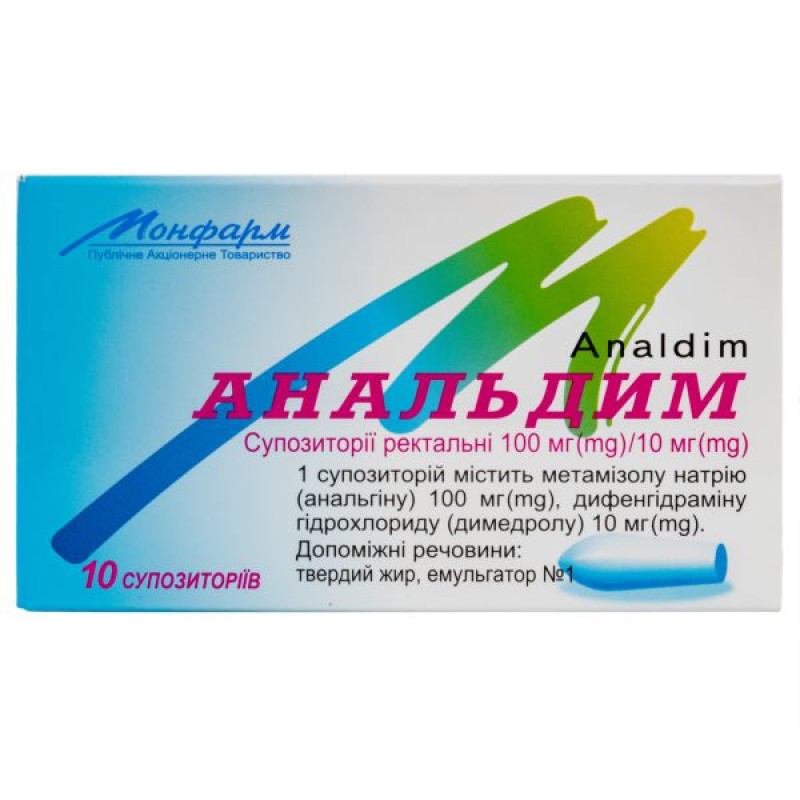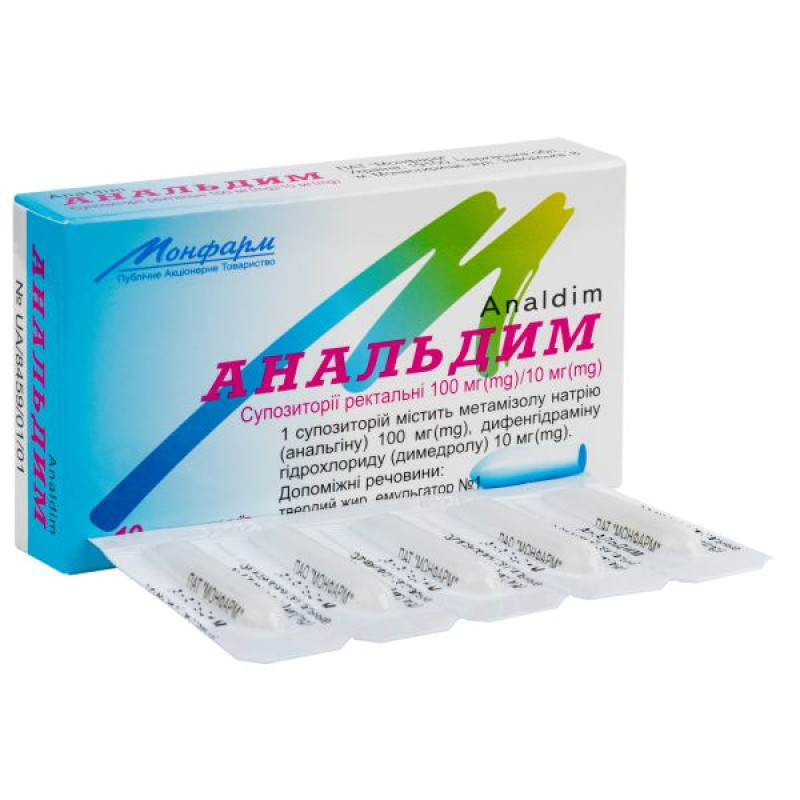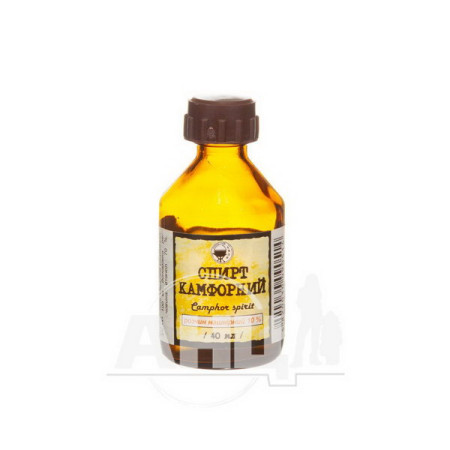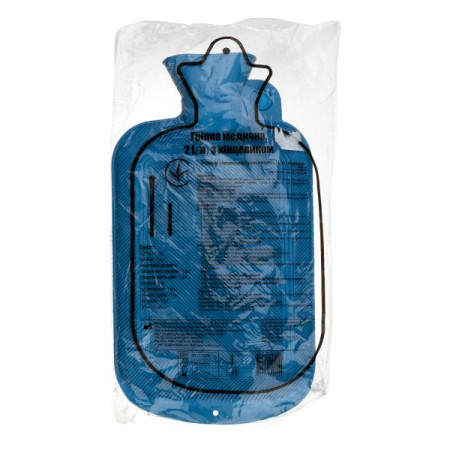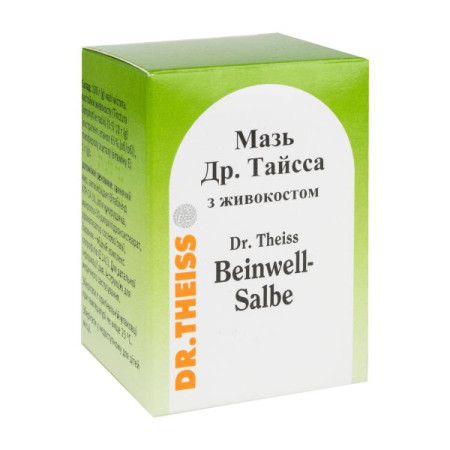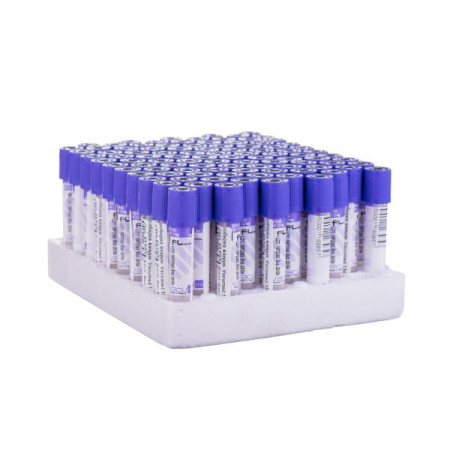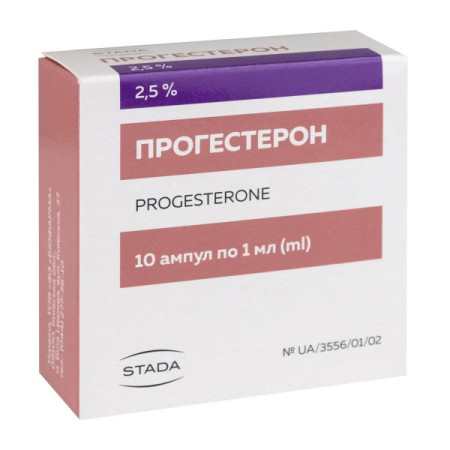Analdim rectal suppositories 100 mg + 10 mg strip No. 10
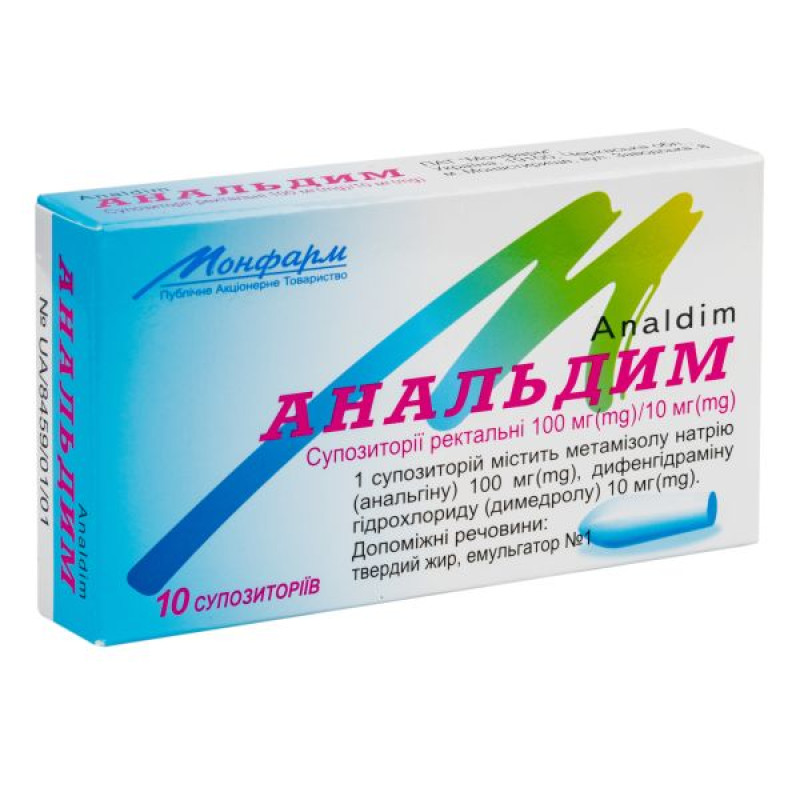
Analdim rectal suppositories are used for the following indications:
pain of various origins (headache, pain from burns, neuralgia, radiculitis, myositis, pain in the postoperative period); high body temperature.Composition
1 suppository contains (active ingredients):
metamizole sodium (analgin) - 100 mg; diphenhydramine hydrochloride (dimedrol) - 10 mg.Excipients: solid fat, emulsifier No. 1.
Contraindication
Severe liver or kidney dysfunction, blood diseases (anemia of any etiology, cytostatic or infectious neutropenia; agranulocytosis, leukopenia), glucose-6-phosphate dehydrogenase deficiency, rhinitis, conjunctivitis or bronchospasm when taking nonsteroidal anti-inflammatory drugs, bronchial asthma, hypersensitivity to the drug, suspicion of acute surgical pathology, hypersensitivity to antihistamines, pheochromocytoma, epilepsy, congenital long QT syndrome or prolonged use of drugs that can prolong the Q-interval, glaucoma, prostatic hyperplasia, stenosing gastric and duodenal ulcers, bladder neck stenosis, bradycardia, cardiac arrhythmias, hypersensitivity to other pyrazolone derivatives (butadione, tribuzone, antipyrine).
Method of application
The drug is administered into the rectum. The frequency of use is 1-3 suppositories per day.
Children aged 1-4 years are prescribed one suppository containing 100 mg of analgin and 10 mg of dimedrol.
The duration of treatment is determined individually. The drug is used until the symptoms of fever and pain are relieved; usually from one to 3-4 days.
Application features
Pregnant women
The drug is contraindicated during pregnancy. Breastfeeding should be discontinued during treatment.
Drivers
During treatment with the drug, driving and other mechanisms should be avoided.
Overdose
Symptoms: hypothermia, palpitations, pronounced decrease in blood pressure, tachycardia, dysphagia, shortness of breath, tinnitus, nausea, vomiting, stomach pain / gastritis, weakness, drowsiness, delirium, impaired consciousness, convulsive syndrome; possible development of acute agranulocytosis, hemorrhagic syndrome, oliguria, anuria, acute renal or hepatic failure, paralysis of the respiratory muscles.
Treatment: drug withdrawal, induction of vomiting, gastric lavage, administration of saline laxatives, enterosorbents, forced diuresis, symptomatic therapy aimed at supporting vital functions. In severe cases, hemodialysis, hemoperfusion, peritoneal dialysis are possible. At the first symptoms of overdose, you should immediately seek medical help.
Side effects
On the part of the immune system: allergic reactions, skin rashes (papular, small-spotted, erythematous-urticarial), urticaria, skin itching, angioedema, contact dermatitis, rashes on the mucous membranes, conjunctivitis, skin hyperemia, angioedema, bronchospastic syndrome, anaphylactic shock, Stevens-Johnson syndrome, Lyell syndrome.
From the side of the central nervous system: due to the action of diphenhydramine - drowsiness, insomnia, decreased attention, decreased speed of psychomotor reactions, anxiety, impaired coordination of movements, increased excitability (especially in children), nervousness, irritability, euphoria, confusion, tremor, sweating, chills, neuritis, seizures, paresthesia, dilated pupils, diplopia, visual impairment, acute labyrinthitis, tinnitus, dizziness, headache, numbness of the oral mucosa, general weakness.
On the part of the blood: possible inhibition of hematopoiesis (thrombocytopenia, granulocytopenia, leukopenia, hemolytic anemia, hemolytic jaundice - agranulocytosis).
Gastrointestinal: dry mouth, nausea, vomiting, epigastric pain, diarrhea, constipation.
On the part of the urinary system: frequent and/or difficult urination, urinary retention, transient oliguria, anuria, proteinuria, interstitial nephritis.
From the side of the cardiovascular system: chest tightness, palpitations, tachycardia, extrasystole, difficulty breathing, decreased blood pressure.
On the part of the respiratory system: with a tendency to bronchospasm, an attack may be provoked.
Storage conditions
Store in original packaging at a temperature not exceeding 15 °C, out of the reach of children.
Shelf life - 2 years.
There are no reviews for this product.
There are no reviews for this product, be the first to leave your review.
No questions about this product, be the first and ask your question.







